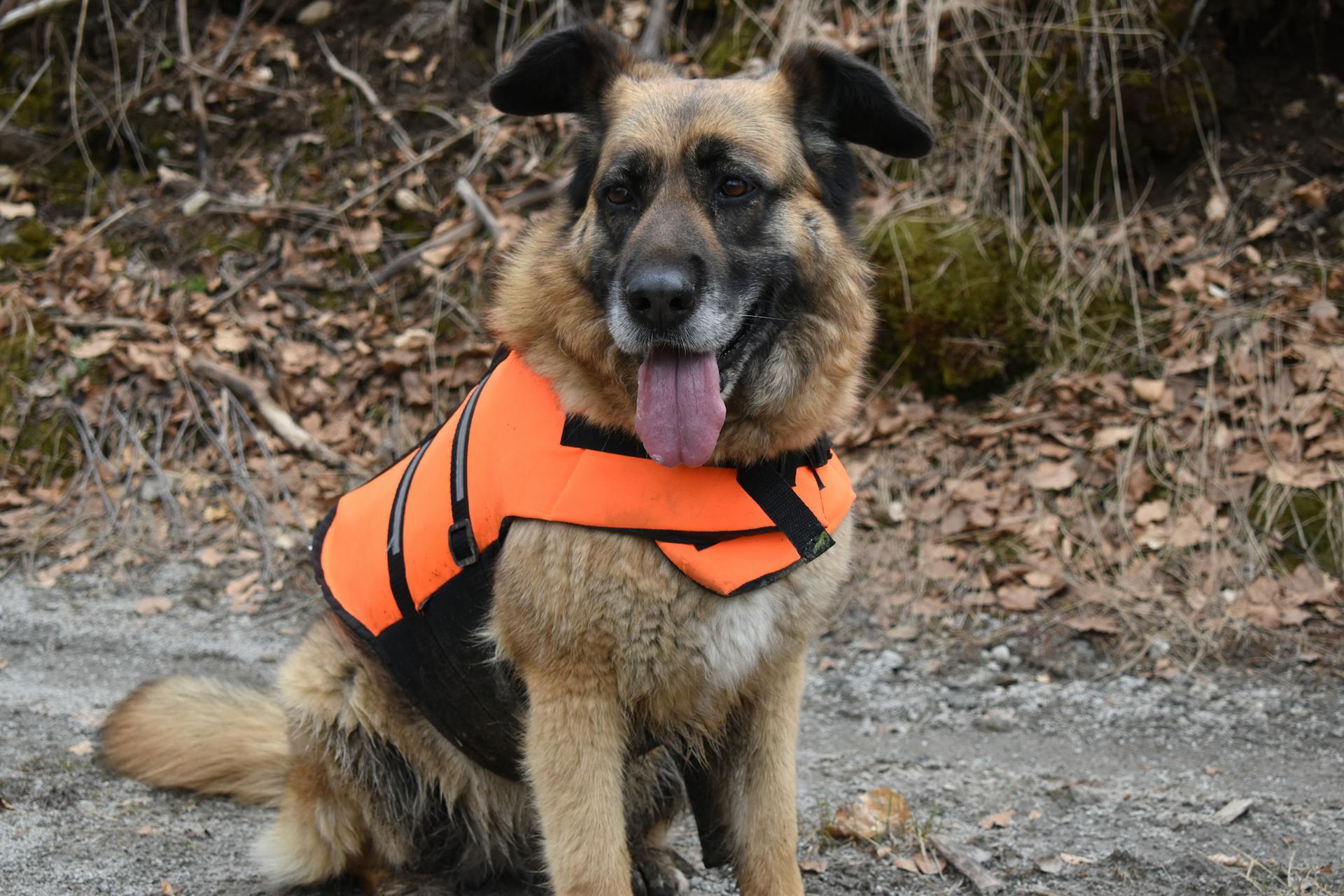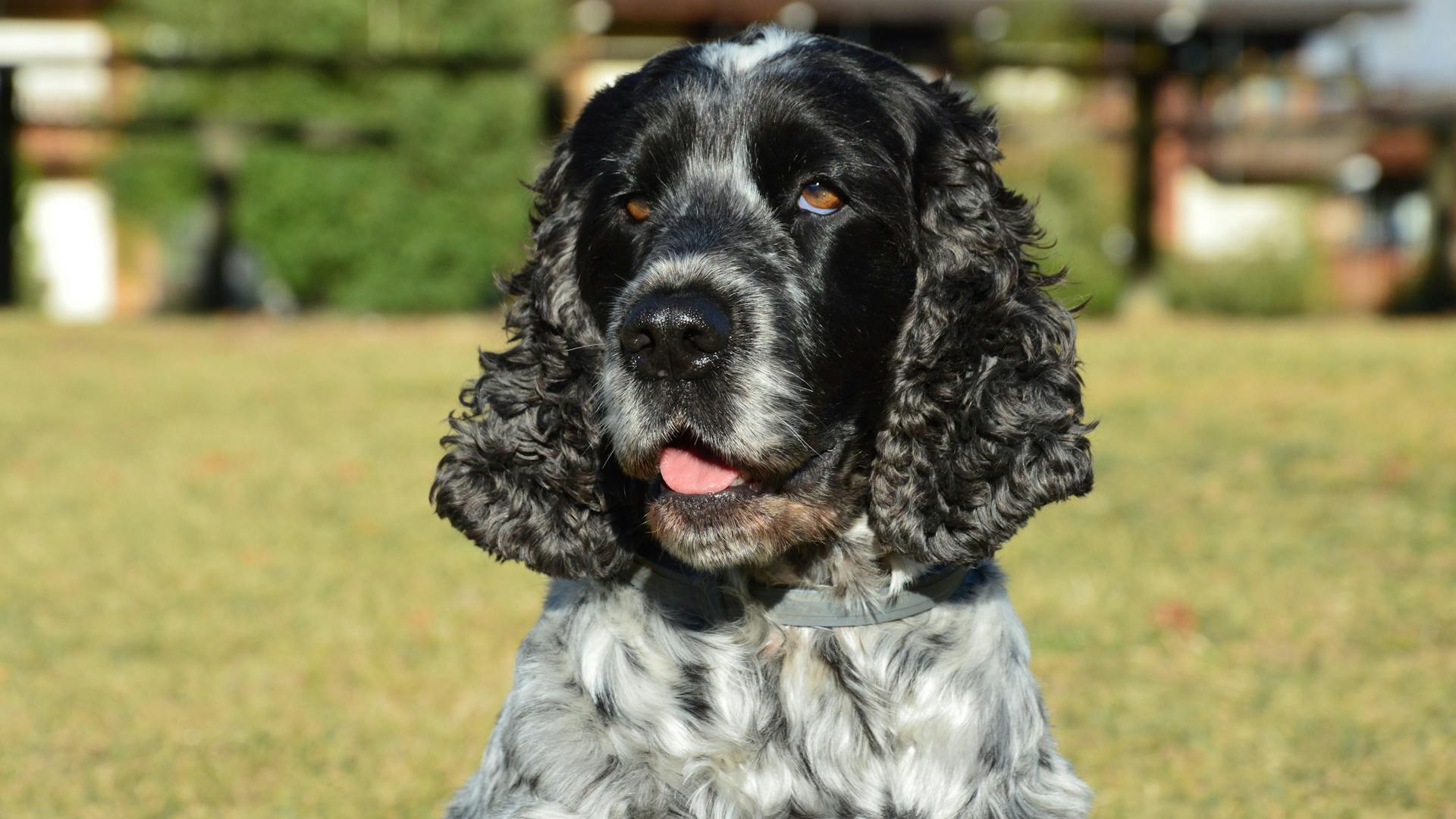
Blonde German Shepherds are a rare and striking variation of the popular breed. They owe their distinctive coat color to a genetic variation that dilutes the black pigment, resulting in a range of creamy hues.
These dogs are intelligent, loyal, and active companions. They require regular exercise and mental stimulation to prevent boredom and destructive behavior.
Blonde German Shepherds are generally healthy dogs, but like all breeds, they can be prone to certain health issues. Hip dysplasia and digestive problems are common concerns for German Shepherd owners.
With proper care and attention, Blonde German Shepherds can live up to 12 years or more. Regular veterinary check-ups and a balanced diet are essential for maintaining their overall health and well-being.
Physical Characteristics
Blonde German Shepherds have a stunning light-colored coat that sets them apart from their more common counterparts.
Their coat color is what makes them so popular, and it's easy to see why - it's truly beautiful.
The weight of a blonde German Shepherd can range from 50 to 90 pounds, varying depending on factors such as genetics, diet, and exercise.
It's essential to ensure they maintain a healthy weight for their size, as this can impact their overall well-being.
Blonde German Shepherds typically stand at a height of 22 to 26 inches, with a strong and muscular build that adds to their impressive stature.
Their ears are upright and alert, adding to their intelligent and attentive appearance.
The tail of a blonde German Shepherd is long and bushy, adding to their majestic and regal presence.
Their eyes can be a unique feature, with some having light blue or even red eyes - it's truly stunning.
Here are the physical characteristics of a blonde German Shepherd at a glance:
- Coat: light-colored
- Ears: upright and alert
- Tail: long and bushy
- Weight: 50-90 pounds
- Height: 22-26 inches
- Eyes: light blue or red (can be brown)
Care and Maintenance
Blonde German Shepherds shed a lot, so be prepared to invest in good combing and de-shedding tools to make your job easier.
It's also worth noting that German Shepherd puppies are born with light-colored fur, which changes with time.
Weight Growth Chart
As you care for your new Blonde German Shepherd, tracking their weight growth is essential to ensure they're developing healthily. At one month, your puppy will likely weigh between 5.5 to 9 pounds.
You'll notice a significant jump in weight between one and two months, with males weighing between 16 to 20 pounds and females between 11 to 17 pounds.
By three months, your puppy will have reached a weight of 22 to 30 pounds for males and 17 to 26 pounds for females.
To keep track of your puppy's weight, you can use the following growth chart:
At four months, males will weigh between 35 to 40 pounds, while females will weigh between 31 to 35 pounds.
Pet Care
As a dog owner, you'll want to be prepared for regular grooming sessions. Blonde German Shepherds shed a lot.
Investing in good combing and de-shedding tools will make your job easier and not hurt your dog in any way.
For your interest: Shepherd Dogs Breeds
Temperament and Training
Blonde German Shepherds are known for their loyal and protective nature, making them great companions for independent families.
Their high energy level means they require regular physical and mental health care, which should be tailored to their individual needs.
Consistency is key when establishing a routine for your dog, and consulting a vet is essential for determining their specific needs.
Training a Blonde German Shepherd is straightforward, as they are just as trainable and adjustable as other German Shepherds.
Temperament
Blonde German Shepherds are known for their loyal and protective nature.
They have a high level of energy, which means they require regular exercise and mental stimulation to prevent boredom and destructive behavior.
You must consult a vet before setting any routine for your dog, as they will be able to give your dog an individual physical examination that will determine the dog's needs.
A consistent routine is key to keeping your Blonde German Shepherd happy and healthy, so make sure to stick to it.
Broaden your view: Aussie Dog Lifespan
Their loyal nature makes them great companions if you live independently, but they also thrive in family environments where they can receive attention and affection.
It's essential to take care of their physical and mental health needs as much as possible, as neglecting these needs can lead to behavioral problems.
Training
Training a Blonde German Shepherd is a breeze, as they are just as trainable as other German Shepherds.
They are highly adjustable to work and home environments, making them a great addition to any family.
Their rarity doesn't mean they're any harder to manage, and with the right training, they'll thrive in any setting.
With their intelligence and eagerness to please, they'll learn quickly and efficiently, making training sessions a productive and enjoyable experience for both you and your dog.
They May Leave
Some German Shepherds will stay blonde their entire life, but it's extremely common for them to darken with age.
It's possible for a blonde puppy to turn tan or brown later in life.
You may end up with a dog that looks completely different from what you expected.
It's also possible for a puppy that looks white to turn blonde with age, although this is unlikely to occur.
Health and Cost
As a responsible dog owner, it's essential to consider the potential health issues that can affect your Blonde German Shepherd. Each dog needs specific needs to be met to have a long and healthy life.
Many factors can affect the health of a dog, and Blonde German Shepherds are no exception. They can face some health issues with time and age.
It's natural to wonder about the cost of caring for a Blonde German Shepherd, especially considering their potential health issues.
Recommended read: Anatolian Shepherd Dog Lifespan
Health Issues
As a dog owner, it's essential to be aware of the potential health issues that can affect your furry friend. Many factors can affect the health of a dog, and each dog needs specific needs to be met to have a long and healthy life.
Blonde German Shepherds are no exception, and they can face some common diseases with time and age.
Hip dysplasia is a significant health issue in many breeds, including Blonde German Shepherds.
Each dog is unique, but being aware of these potential health issues can help you take proactive steps to prevent or manage them.
Cost

Blonde German Shepherds can cost anywhere from $500 to $2000, depending on where and how you find one.
Their rarity is a significant factor in their higher cost, making them pricier than desirable coat colors.
You can expect to pay $1,000–2,000 for a blonde German Shepherd pup from a high-quality breeder.
However, you might get lucky and find one for $500–1,000, although this is not guaranteed.
Life Expectancy
The life expectancy of a dog is a crucial aspect of their overall health and cost. A blonde German Shepherd can live for around 7 to 10 years.
Genetics play a significant role in determining a dog's lifespan. A dog's diet and exercise also impact their life expectancy, and proper care can make a big difference.
Sources
- https://petguidesreviews.com/blonde-german-shepherd/
- https://germanshepherdcares.medium.com/the-blonde-german-shepherd-a-guide-to-this-unique-gsd-coat-color-8c5f03086980
- https://www.istockphoto.com/photos/blonde-german-shepherd
- https://www.hepper.com/blonde-german-shepherd/
- https://pastoralemann.com/types/blonde-german-sheperd/
Featured Images: pexels.com


